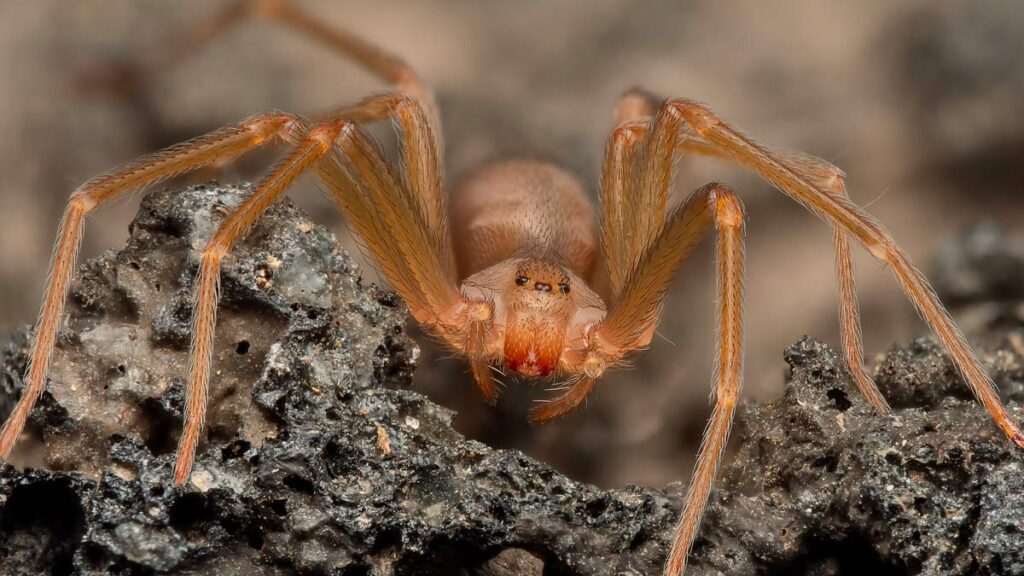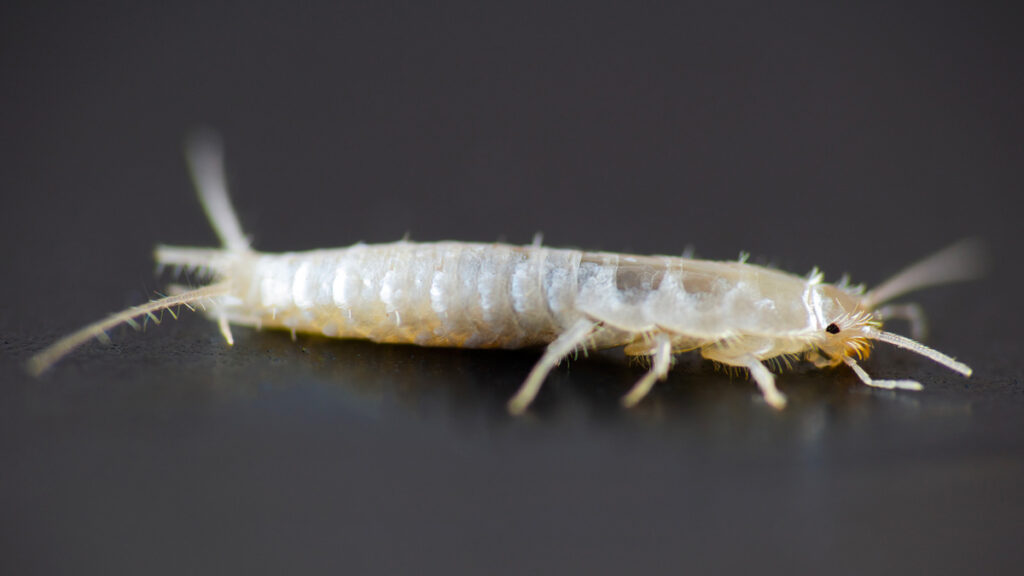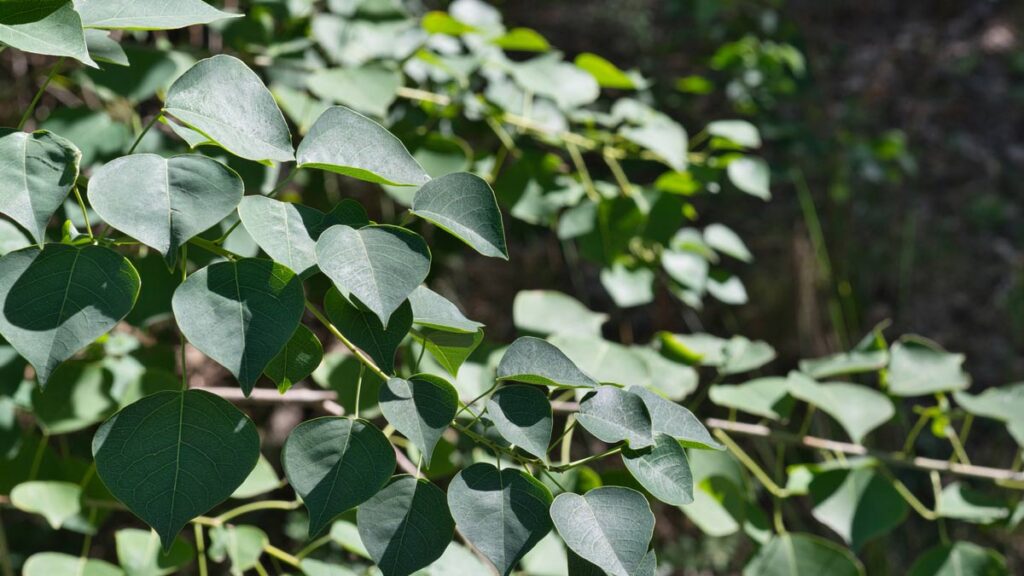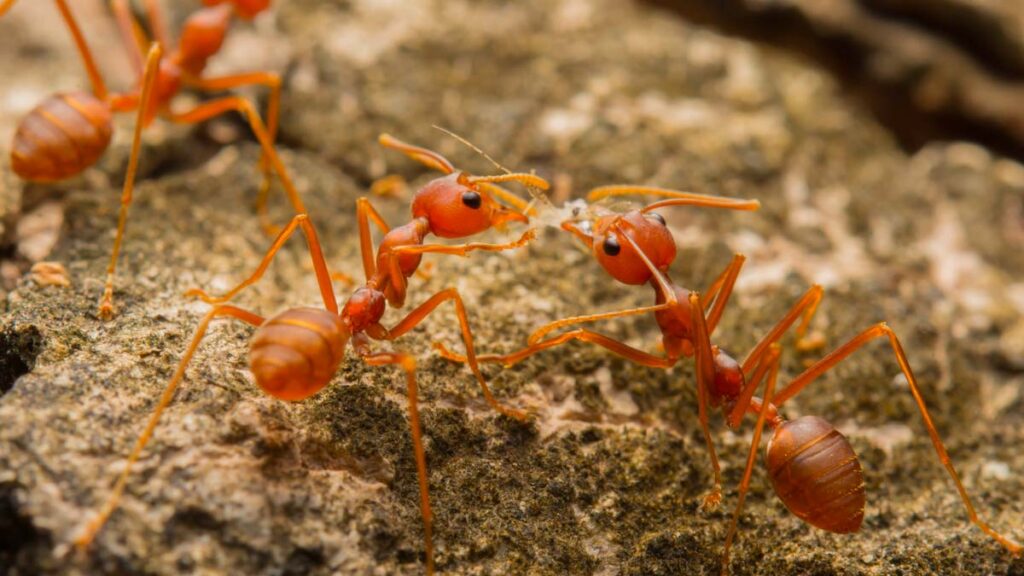
Managing the Spread of Giant African Land Snails in Florida
Confronting the Invasion
Updated on: January 2024

The spread of giant African land snails in Florida has become a concerning ecological challenge in recent years. These invasive snails, known for their voracious appetite and rapid reproductive rate, pose a threat to the state’s delicate ecosystems, native flora and fauna, agricultural industries, and even human health. As they continue to establish their presence across Florida, their impact on both natural and human environments intensifies.
The ecological ramifications of the giant African land snail invasion are far-reaching. The snails compete with native species for food and habitat, and their insatiable appetite can lead to extensive damage to agricultural crops and vegetation. Beyond the environmental effects, there are significant economic repercussions due to lost agricultural revenue and the costs associated with control measures. Additionally, these snails can transmit diseases to humans, making public health a pressing concern. Finding effective methods to manage their spread while considering the intricate balance of ecological, economic, and health factors remains a paramount challenge. Addressing these concerns necessitates a comprehensive approach that involves collaboration between government agencies, researchers, and local communities.
Find What You Need
Proliferation of Giant African Land Snails in Florida
The proliferation of Giant African Land Snails in Florida has emerged as a pressing ecological and economic concern with far-reaching implications. The rapid expansion of giant African land snails in Florida can be attributed to a convergence of key factors. These invasive snails possess a remarkable ability to adapt and reproduce swiftly, with each individual capable of laying hundreds of eggs within a year. This high reproductive rate facilitates exponential population growth, which escalates the challenge of containment.
Role of Climate, Transportation, and Unintentional Introduction
The unique climate of Florida, characterized by warmth and humidity, furnishes an optimal environment for the thriving of giant African land snails. These creatures thrive in subtropical conditions and damp habitats, which closely match the state’s climate. A significant contributor to their expansion is human-mediated transportation. These snails often exploit vehicles, agricultural equipment, and even imported goods as vehicles for unintentional dispersal. With increased global trade and travel, the risk of unintentional introductions rises, fueling their dissemination to novel locations.
Cost Implications of Giant African Land Snails
Efforts to manage and mitigate the spread of giant African land snails carry substantial costs. Resources are allocated for research, monitoring, education, and the implementation of control measures. Physical removal and chemical treatments, though effective, demand financial investment and manpower. Indirect costs encompass damage to agriculture, infrastructure, and property. The financial burden underscores the urgency of devising efficient strategies to curtail their proliferation effectively.
The Takeaway
Addressing the relentless spread of giant African land snails in Florida demands a collaborative, proactive approach that combines early detection, innovative strategies, and collective efforts to safeguard ecosystems, agriculture, and public health.
Ecological Implications and Impact on Native Flora and Fauna
The ecological implications and impact of Giant African Land Snails on native flora and fauna in Florida cast a shadow over the delicate balance of its ecosystems.
Disruption of Ecosystems
The proliferation of giant African land snails in Florida has far-reaching ecological consequences, primarily centered on the disruption of delicate ecosystems. These snails, being voracious herbivores, consume a wide variety of plants, altering the dynamics of native vegetation and upsetting the intricate balance of the ecosystem. Their rapid consumption of vegetation can lead to habitat degradation, soil erosion, and a decline in plant diversity, affecting the overall health and resilience of ecosystems.
Threats to Native Plants, Animals, and Biodiversity
Giant African land snails pose a significant threat to Florida’s native flora and fauna. They directly compete with local herbivores for resources and habitat, by consuming native plants. This competition for food sources can lead to reduced food availability for other species, potentially endangering their survival. Furthermore, the introduction of these snails can create novel predator-prey relationships that disrupt the existing ecological equilibrium. As these snails outcompete native species and alter the composition of the food web, the overall biodiversity of affected areas is jeopardized. Protecting the native plants and animals from the pressures imposed by the snail invasion is critical to maintaining the health and functionality of Florida’s ecosystems.
Challenges in Detection and Eradication
Navigating the challenges in detecting and eradicating Giant African Land Snails in Florida requires a concerted effort to overcome barriers and prevent their further spread. Efforts to detect and contain the spread of giant African land snails in Florida are fraught with challenges. These snails possess a remarkable ability to blend into their surroundings, making their identification problematic. Their camouflaging capabilities, coupled with their nocturnal behavior, make visual detection a complex task. Furthermore, their preference for hidden, moist environments often keeps them out of plain sight, hindering swift intervention. Containment proves equally challenging due to their rapid reproductive rate and tendency to spread to new areas, even through human-mediated transportation.
Consequences of Delayed Action and Population Growth
The consequences of delayed action against the spread of giant African land snails can be dire. Given their rapid reproductive cycle, a small initial population can explode into a substantial infestation within a short timeframe. The exponential growth of their numbers escalates the ecological and economic impacts, as well as the complexity of eradication efforts. The lack of early intervention not only multiplies the resources required for containment but also increases the likelihood of these snails establishing themselves in new habitats, exacerbating the overall challenge of managing their spread. Addressing these challenges requires a proactive approach that emphasizes early detection and swift response to prevent uncontrolled population growth.
Controlling Giant African Land Snails
Controlling the spread of Giant African Land Snails in Florida demands a comprehensive approach, integrating physical removal, chemical control, and innovative strategies to curb their proliferation.
Managing Their Spread
In the battle against the relentless spread of giant African land snails in Florida, various strategies are employed to manage their impact. These strategies encompass a multi-pronged approach aimed at slowing their proliferation and reducing their ecological footprint. Targeting both prevention and intervention, helps authorities minimize their geographical expansion while containing existing populations.
Physical Removal, Chemical Control, and Innovative Techniques
The arsenal of techniques employed to control giant African land snails includes physical removal, chemical control, and innovative methods. Physical removal involves the manual collection and destruction of snails and their eggs, aiming to reduce their numbers on a localized scale. Chemical control entails the use of pesticides specifically designed to target these invasive snails while minimizing impact on non-target species. Additionally, innovative techniques are being explored, such as the deployment of biological agents that can help control snail populations. These methods, when used strategically and in conjunction, contribute to a comprehensive approach for managing the spread of giant African land snails in Florida.
Public Awareness and Community Involvement
Raising public awareness and fostering community involvement is pivotal in the fight against the invasion of Giant African Land Snails in Florida.
Importance of Educating the Public
Raising public awareness is a cornerstone of managing the spread of giant African land snails in Florida. Educating the community about the threat these invasive snails pose to the environment, agriculture, and public health is crucial. Understanding the risks associated with their presence, allows individuals to adopt preventive behaviors and become more vigilant in identifying and reporting potential infestations.
Role of Communities in Prevention and Reporting
Communities play an indispensable role in both the prevention and early detection of giant African land snails. Residents can take proactive measures in their own spaces to prevent the introduction and establishment of these snails. This might involve inspecting incoming plants, fruits, and vehicles for any signs of snails or eggs. Equally important is the prompt reporting of any suspected infestations to relevant authorities. This citizen engagement enhances the effectiveness of monitoring and eradication efforts, ultimately contributing to a collective response to mitigate the spread of these invasive snails.
Human Health and Safety Concerns
Addressing human health and safety concerns stemming from the presence of Giant African Land Snails in Florida is a paramount priority in safeguarding public well-being. The presence of giant African land snails in Florida raises legitimate concerns for human health and safety. These snails are known carriers of pathogens, including the rat lungworm parasite, which can be transmitted to humans through contact or consumption. Ingesting raw or undercooked snails or vegetables contaminated by their slime can lead to potentially severe health issues. The parasite can cause eosinophilic meningitis, resulting in symptoms ranging from headaches and nausea to neurological complications.
Measures to Minimize Threats to Public Health
To minimize the threats to public health posed by giant African land snails, a series of measures are advised. It is paramount to avoid handling these snails without proper protection and to refrain from consuming them. Thoroughly washing fresh produce is essential to reduce the risk of contamination. Additionally, cultivating heightened awareness within healthcare providers regarding the potential link between certain symptoms and snail exposure can facilitate early diagnosis and treatment. By remaining informed and adopting these precautionary measures, individuals can safeguard themselves against the health risks associated with these invasive snails.
Collaborative Efforts and Lessons from Other Regions
Collaborative efforts and lessons drawn from experiences in other regions provide invaluable insights in the ongoing battle against the proliferation of Giant African Land Snails in Florida.
Cooperation between Agencies, Researchers, and Communities
Addressing the spread of giant African land snails necessitates a collaborative ecosystem involving government agencies, researchers, and local communities. Government entities play a crucial role in implementing regulations and policies that support prevention, monitoring, and eradication efforts. Researchers contribute by studying the behavior and biology of these snails, enabling the development of more effective management strategies. Local communities, on the other hand, act as the eyes and ears on the ground, aiding in early detection and reporting. This interplay between various stakeholders strengthens the fight against invasive species, fostering a collaborative atmosphere that enhances the chances of successful control and mitigation.
Long-Term Consequences and Economic Impact
Analyzing the long-term consequences and economic impact of the Giant African Land Snail invasion underscores the urgency of effective management strategies in Florida.
Potential Outcomes of Ineffective Management
Failing to effectively manage the spread of giant African land snails in Florida could lead to a series of dire ecological and economic consequences. Left unchecked, these invasive snails could establish themselves in new territories, further displacing native species and disrupting delicate ecosystems. This could result in a decline in native biodiversity, affecting the balance and functionality of the affected areas. Moreover, their unchecked proliferation could escalate the economic costs associated with their control, leading to a scenario where resources become increasingly strained and the problem becomes more challenging to address.
Economic Costs of Addressing Spread and Impact
The economic costs linked to the spread and impact of giant African land snails are substantial. Direct costs involve the implementation of control measures, research, and monitoring efforts. However, the true economic burden extends beyond these immediate expenses. The agricultural industry faces significant losses due to crop damage and reduced yields, affecting both farmers and the broader economy. Additionally, resources diverted to tackle the snail issue could otherwise be allocated to other vital projects. As such, the economic ramifications reverberate across sectors, emphasizing the urgency of strategic management to minimize both short-term and long-term financial strain.
Legal Regulations and Frameworks
Navigating the legal regulations and frameworks surrounding the management of Giant African Land Snails in Florida forms a crucial foundation for comprehensive control measures.
Overview of Existing Legal Measures in Florida
Florida has established a comprehensive set of legal measures aimed at addressing the introduction and spread of invasive species, including giant African land snails. These regulations provide the foundation for managing the ecological and economic impacts of these invaders. State agencies such as the Florida Department of Agriculture and Consumer Services (FDACS) oversee and enforce these measures, which involve protocols for reporting, handling, and controlling invasive species.
Regulations Supporting Prevention, Detection, and Control
The legal framework encompasses regulations that support prevention, early detection, and control efforts. These measures emphasize the importance of halting the unintentional introduction of invasive species through trade, travel, and commerce. The regulations also provide guidelines for swift response in the event of new infestations, outlining protocols for containment and eradication. Enacting these regulations creates a proactive environment that empowers authorities, researchers, and communities to collaboratively address the spread of giant African land snails and other invasive species.
Innovative Approaches and Research Initiatives
Exploring innovative approaches and ongoing research initiatives is essential to develop effective strategies for addressing the challenge posed by Giant African Land Snails in Florida.
Ongoing Research for Improved Strategies
In the relentless pursuit of more effective strategies to manage the proliferation of giant African land snails in Florida, researchers are immersed in ongoing endeavors that hold promise. A notable study conducted by University of Florida in 2022 delved into the intricate facets of snail biology, behavior, and reproductive patterns, offering crucial insights into their vulnerabilities. This comprehensive exploration has formed a bedrock for refining control methods and elevating eradication techniques. This study revealed that understanding the snails’ reproductive cycles has enabled more targeted interventions during peak breeding periods, enhancing the efficiency of control efforts. The results underscore the pivotal role of research in informing adaptive strategies that effectively balance control effectiveness while minimizing potential harm to the environment.
Emerging Technologies for Snail Control
In the pursuit of innovative solutions, emerging technologies are being explored as potential tools for controlling giant African land snails. These include the application of advanced remote sensing techniques to detect and monitor snail populations across vast landscapes. Additionally, researchers are investigating the use of biological agents, such as natural predators or pathogens, to limit snail numbers. Furthermore, cutting-edge genetic and molecular techniques are being harnessed to pinpoint weaknesses in the snails’ biology that could be exploited for control. As these technologies mature, they offer promising avenues to enhance the efficiency and precision of managing the snail invasion in Florida.
Early Detection and Prevention Strategies
Significance of Early Detection
Early detection emerges as a cornerstone in the battle against the spread of giant African land snails in Florida. Identifying infestations at their nascent stages enables swift and targeted intervention, preventing the snails from establishing a foothold. This early response can effectively curb their population growth and limit their spread to new areas. With the snails’ remarkable reproductive rate, a timely identification can mean the difference between manageable containment and an uncontrollable infestation.
Proactive Measures Individuals Can Take
Individuals play a pivotal role in the early detection and prevention of these invasive snails. Vigilance is key when it comes to inspecting plants, fruits, and vehicles for any signs of the snails or their eggs. Homeowners can establish barriers and deterrents that discourage snails from entering gardens and landscapes. Furthermore, promptly reporting any suspected snail sightings to relevant authorities contributes to swift response efforts. Individuals can be a crucial line of defense in thwarting the spread of giant African land snails, safeguarding both their own spaces and the larger ecosystem, by adopting these proactive measures.
Climate Change and Future Scenarios
Influence of Climate Change on Snail Distribution and Impact
The specter of climate change casts a significant shadow over the future distribution and impact of giant African land snails in Florida. As temperatures rise and precipitation patterns shift, the snails’ favored subtropical and humid habitats could expand. Warmer conditions might enable them to thrive in regions that were previously less hospitable. This potential range expansion could amplify their impact on ecosystems, exacerbating the challenges of containment.
Potential Effects on Behavior and Spread
Climate change may also alter the behavior and spread patterns of giant African land snails. Warmer temperatures might accelerate their reproductive cycle, leading to faster population growth and a broader geographical distribution. Altered rainfall patterns could affect their preferred moisture levels, potentially enabling them to colonize new areas. Furthermore, changes in climate could influence their interactions with native species, potentially leading to novel ecological dynamics. As Florida grapples with the implications of climate change, factoring these shifts into management strategies becomes crucial to ensure their effectiveness in a shifting environmental landscape.
Conclusion
In the realm of managing the spread of giant African land snails in Florida, several key takeaways emerge. The snails’ remarkable reproductive rate, coupled with their adaptability to the state’s climate, underscores the urgency of early detection and swift intervention. The disruption they cause to ecosystems, native species, agriculture, and public health demands a multifaceted approach that balances ecological, economic, and human concerns. Central to effective management is the spirit of collaboration among government agencies, researchers, and communities. Lessons are drawn from past successes and failures, both in snail management and invasive species control, guide the crafting of informed strategies. As climate change introduces new dynamics, remaining proactive and adaptive will be essential. By uniting in a concerted effort, Florida can maximize its chances of mitigating the spread of giant African land snails, thereby preserving the state’s ecological integrity, agricultural productivity, and public well-being for generations to come.





